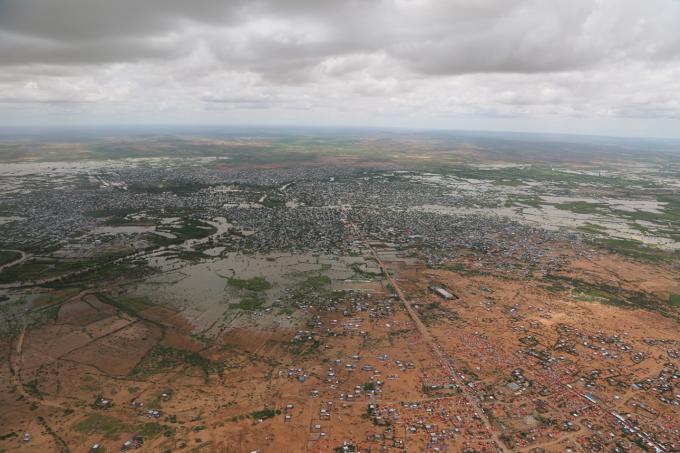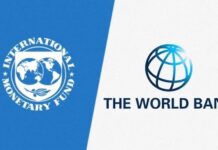I did not know what to expect when I boarded a World Food Program (WFP) humanitarian helicopter to Belet Weyne in Hiran region of Somalia. For the first, helicopters are not the usual mode of transport to the region but today this is the only way that can get me to Belet Weyne following the recent riverine and flash floods that hit central and southern regions of Somalia in early May.
When we landed in Belet Weyne town, the whole place was covered with water. It was disheartening to see areas that used to be roads were turned into brown muddy bodies of water; people’s houses and shelters were washed away leaving only the strong ones immersed in water. The town that was filled with children’s voices running up and down the streets was now reduced to swamps and children being rescued using tractors—the only viable means of transport at the moment.

Nearly the entire town of Belet Weyne in Hiran region of Somalia is submerged under water, displacing thousands of people and devastating crops. Photograph: Mohamed Osman/Save the Children
The riverine and flash flooding in Central and Southern regions of Somalia have affected at least 770,000 people and displaced over 230,000 people by end of May. The floods came at a time when the people of Somalia are at their most vulnerable state following the on going drought as a result of four consecutive failed rainy seasons. The drought left at least 5.4 million Somalis— at least half being children in need of sustained humanitarian assistance.
As the flash floods destroyed farmlands and people’s livelihoods, they also destroyed infrastructure, disrupting food supply and humanitarian support in many cities and towns across Somalia.
“When we first felt the rains, we were over joyed. We thought our people would have a chance to go back to their farms and produce. With time, our communities would be food secure once again. But now the floods came and washed away all our hopes,” says Muhumee Ahmed Osoble.
In Hiran region, one of the worst-hit areas, large parts of Belet Weyne town and several riverine villages have been inundated, forcing more than 145,000 people from their homes.
Schools are badly affected as well. For instance, a total of 7,348 children from 19 out of 23 Save the Children supported schools had been affected during exam periods.
“Thanks to early preparation and working very closely with Ministry of Education (MoE) for HirShabelle state, at least children from fifteen schools managed to successful complete their exams,” said Shamsa Ismaeel Khalif, Save the Children Belet Weyne, Education Program Coordinator. Save the Children will continue to support schools and the government to ensure children’s education is not affected.

Save the Children Somalia distributing emergency Non-food items (NFI) for flood effected households in Shiirkaneeco, Belet Weyne. Photograph: Mohamed Osman/Save the Children
Immediate action:
Save the Children was among the first agencies to provide immediate support to affected communities. It distributed 12,000 sandbags in the first week, and is providing clean and safe drinking water to 43,650 internally displaced persons (IDP’s). In addition, Save the Children with support from the Emergency Seed funding (Members Pooled Funding) & Start Network fund has;
- Water, Sanitation and Hygiene services:Constructed a total of 290 emergency latrines and is actively engaging the IDP communities on hygiene promotional and water chlorination
- Life-saving support: Distributed emergency Non-food items (NFI) to 850 households that were evacuated to Bananey, Shiirkaneeco, Guricade and Marergagabta villages in Belet Weyne town.
The risk of disease outbreak in the aftermath of the flooding is a real threat for the residents of Belet Weyne. To contain any disease outbreaks in the heavily populated town, it requires a well-coordinated humanitarian response from all sides. Early signs of Acute Watery Diarrhoea (AWD) has been reported at Save the Children’s mobile health clinic in Budo Weyen and we are already responding and monitoring the situation.
Save the Children’s Jalafey Isak who is the agency’s emergency focal point and co-chair of the Hiran flood task-force said “humanitarian partners continue to scale up the response to flood-affected communities. We must sustain and scale up our response with fears of disease outbreaks once the water recedes”.




